Lima Cuisine: You Don’t Know What You’re Missing
By Jonathan Yardley, The Washington Post
In recent years, Jorge Chavez International Airporthas been so spectacularly rejuvenated that it inadvertently reinforces an old cliche about the city it serves: Lima — the City of Kings, the capital of Peru, home to 9 million people — is merely a way station for travelers en route to Cuzco, Machu Picchu, Iquitos, Lake Titicaca and Peru’s other celebrated attractions.
As to what they’re missing, they haven’t a clue. Not merely is old Lima rich in history, but new Lima is so rich gastronomically as to put just about all the world’s other cities to shame. Today it is not merely advisable but mandatory to come to Lima para la cocina: for the food.
Please don’t ask me to be objective about Peruvian food or, for that matter, anything else in what has become my adopted second home. My wife is a native of Lima, and two years ago we bought an apartment in Miraflores, a district of the capital that was a seaside resort when it was founded in the late 19th century but is now a bustling city unto itself. We don’t own a car, not only because taxis are plentiful and cheap but also because we can walk just about everywhere we want to go, including dozens of restaurants that range from haute cuisine to home cooking but have one thing in common: The food is indescribably delicious.
My wife and I do not exactly take for granted the food of Miraflores, but during our frequent stays there it is inextricably intertwined in our daily lives. From street-corner vendors we buy mangoes and cherimoyas bursting with sweet juice. At E. Wong, the cornucopian supermarket chain, we get the golf-ball-size limones (tart limes) that are essential ingredients of the puissant Peruvian national drink, the pisco sour, and langostinos (shrimp) so fresh that their heads and tails still twitch. The bakery two blocks away has a startling variety of breads and homemade sandwiches, not to mention splendid beef empanadas.
This is a side of Miraflores that few tourists see. They arrive in taxis or tour buses and are shepherded to the places where tourists are fed: Larco Mar, the lively commercial center cut into the oceanfront cliff a few blocks from our apartment, or the two famous restaurants on the beach below, Costa Verde and Rosa Nautica. These range from okay to fine, but you’ll get only a hint of what Miraflores offers if that’s as far as you go.
Miraflores is scarcely the only place in Lima where excellent restaurants are to be found. In two adjoining suburbs, Barranco and San Isidro, there are a number of good places, and lovers of the Peruvian twist on Chinese food often head for restaurants known as chifas in Chinatown, in the old center city. But the concentration of fine restaurants in Miraflores is nothing short of remarkable. Add to this that Miraflores has many good hotels and shopping districts, is clean and safe, and offers breathtaking views along its three-mile malecon (oceanfront avenue), and it comes down to this: Miraflores is the perfect place for the traveler to discover and savor Peruvian food.
South America has long known about Peruvian food, but only in recent years has the rest of the world begun to catch on. In large measure this is due to the efforts of Gastón Acurio, now in his late 30s, who with his wife, Astrid, a decade and a half ago founded the most famous restaurant in Miraflores, Astrid y Gastón, but whose influence reaches far beyond that. He is a passionate goodwill ambassador for Peruvian food; he has a popular television show that regularly draws attention to other restaurants both great and small, he has published popular and influential cookbooks, he’s opened many other restaurants of his own, and he’s far better known in Peru than any celebrity chef in the United States.
Gastón’s food (in Peru everyone refers to him as Gastón) is an artful blend of traditional Peruvian with contemporary nouvelle techniques. For generations, Peru’s has been a fusion of all the cuisines developed there or brought from elsewhere: native (or criollo), Spanish, Chinese, Japanese, Caribbean, Italian, African. Peru gave the world the potato — it grows thousands of varieties in more colors than you can count — and the potato remains essential to its cuisine, most nobly in causa, a concoction of potato mashed in lime juice and the fiery indigenous pepper aji, and filled or topped with everything from crab (my favorite) to avocado to boiled egg to shrimp to octopus.
As that suggests, seafood is at the heart of Peruvian cookery. It is from the Pacific that Peru’s two greatest dishes come. These are seviche (spelled ceviche or cebiche in Peru) and tiradito. The former is fresh, raw fish, often sole, cut into chunks and “cooked” in lime juice; the latter is fresh, completely raw sole or a native fish called corvina, thinly sliced and covered with one or more of Peru’s innumerable sauces, many based in aji or another hot Peruvian pepper, rocoto.
Tags: food, lima, new york times



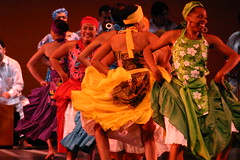
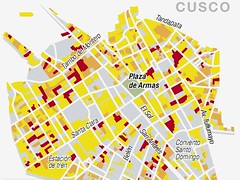

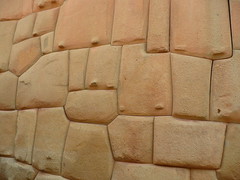
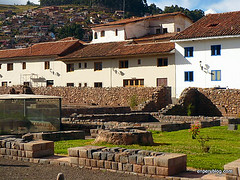
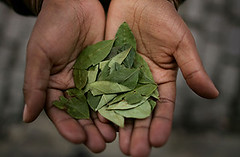

![Peru celebrates Independence Day with fountain of booze [Featured]](http://farm4.static.flickr.com/3236/2697186491_f7a74ae0da_m.jpg)